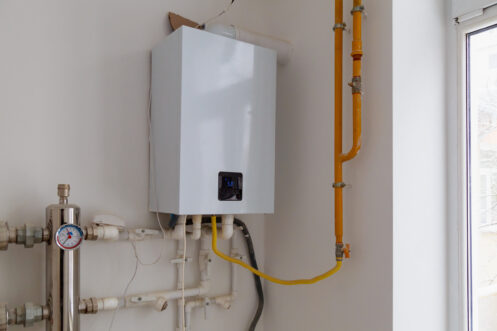Steps on How to Care for Your Home's Hot Water System Effectively
Steps on How to Care for Your Home's Hot Water System Effectively
Blog Article
We have come across this great article pertaining to Tips For Maintaining Your Hot Water Heater listed below on the internet and figured it made sense to quickly share it with you over here.

Warm water is necessary for daily convenience, whether it's for a refreshing shower or washing recipes. To ensure your warm water system runs successfully and lasts much longer, normal maintenance is crucial. This article offers sensible suggestions and understandings on how to preserve your home's warm water system to avoid interruptions and pricey repairs.
Introduction
Keeping your home's hot water system may appear challenging, however with a couple of simple steps, you can ensure it operates smoothly for many years ahead. This overview covers everything from comprehending your warm water system to DIY maintenance ideas and knowing when to hire expert assistance.
Relevance of Preserving Your Warm Water System
Normal upkeep not only extends the life expectancy of your hot water system however also ensures it operates efficiently. Disregarding maintenance can result in decreased performance, greater energy costs, and also premature failure of the system.
Signs Your Hot Water System Demands Upkeep
Recognizing when your warm water system requires focus can protect against significant concerns. Look out for signs such as inconsistent water temperature level, strange sounds from the heating system, or corroded water.
Purging the Water Heater
Flushing your water heater removes debris build-up, boosting performance and extending its life.
Monitoring and Changing Anode Rods
Anode poles stop rust inside the tank. Examining and replacing them when worn out is important.
Complicated Issues Requiring Specialist Aid
Instances include major leaks, electric issues, or if your water heater is regularly underperforming.
Routine Specialist Upkeep Advantages
Specialist upkeep can consist of extensive evaluations, tune-ups, and ensuring conformity with security standards.
Checking and Adjusting Temperature Level Setups
Adjusting the temperature level settings ensures optimum performance and security.
DIY Tips for Upkeep
You can carry out several upkeep tasks on your own to maintain your hot water system in top problem.
Checking for Leakages
Frequently inspect pipelines and connections for leaks, as these can result in water damages and higher costs.
Comprehending Your Hot Water System
Prior to diving right into maintenance jobs, it's valuable to comprehend the basic parts of your warm water system. Usually, this includes the water heater itself, pipes, anode poles, and temperature controls.
Monthly Maintenance Tasks
Regular regular monthly checks can help catch small issues prior to they rise.
Evaluating Pressure Relief Valves
Examining the pressure safety valve ensures it works appropriately and prevents extreme pressure accumulation.
Shielding Pipes
Protecting warm water pipes decreases warmth loss and can save power.
When to Call a Specialist
While DIY upkeep is beneficial, some problems need specialist know-how.
Conclusion
Regular maintenance of your home's warm water system is essential for effectiveness, durability, and price financial savings. By adhering to these tips and understanding when to look for specialist aid, you can ensure a reputable supply of hot water without unforeseen disturbances.
How to Maintain an Instant Hot Water Heater
Before tinkering with your hot water heater, make sure that it’s not powered on. You also have to turn off the main circuit breaker and shut off the main gas line to prevent accidents. Also turn off the water valves connected to your unit to prevent water from flowing into and out of the appliance. 2. When you’re done, you have to detach the purge valves’ caps. These look like the letter “T†and are situated on either side of the water valves. Doing so will release any pressure that has accumulated inside the valves while at the same time avoid hot water from shooting out and burning your skin. 3. When the purge valves’ caps are removed, you have to connect your hosing lines to the valves. Your unit should have come with three hoses but if it didn’t, you can purchase these things from any hardware or home repair shops. You can also get them from retail stores that sell water heating systems. Read the user’s manual and follow it to complete this task properly. When the hosing lines are connected, open the purge port’s valves. 4. You should never use harsh chemical cleaners or solutions when cleaning your unit. Make use of white vinegar instead. It should be undiluted and you’ll probably use about 2 gallons. 5. Now flush your water heater. This task should probably take about 40 minutes. We can’t give you specific directions for this because the procedure is carried out depending on the type, model and brand of your heater. With that being said, refer to the user’s manual. 6. When you’re done draining the unit, you have to turn off the purge port valves again. Remove the hosing lines that you earlier installed on each of the water valves. Put the valve caps (purge port) back in their respective places and be very careful so as not to damage the rubber discs that are found inside these caps. 7. Now that everything’s back in place, check your user’s manual again to find out how to reactivate your water heating system. 8. Once it is working, turn one of your hot water faucets on just to let air pass through the heater’s water supply pipes. Leave the tap on until water flows smoothly out of it. https://www.orrplumbing.com/blog/2014/september/how-to-maintain-an-instant-hot-water-heater/

I was brought to that editorial about How to Maintain Your Water Heater & Prolong its Life from an acquaintance on a different web property. Sharing is caring. You just don't know, you may be helping someone out. We cherish reading our article about Water Heater Maintenance Tips You Can't Afford to Forget.
Estimate Free Report this page